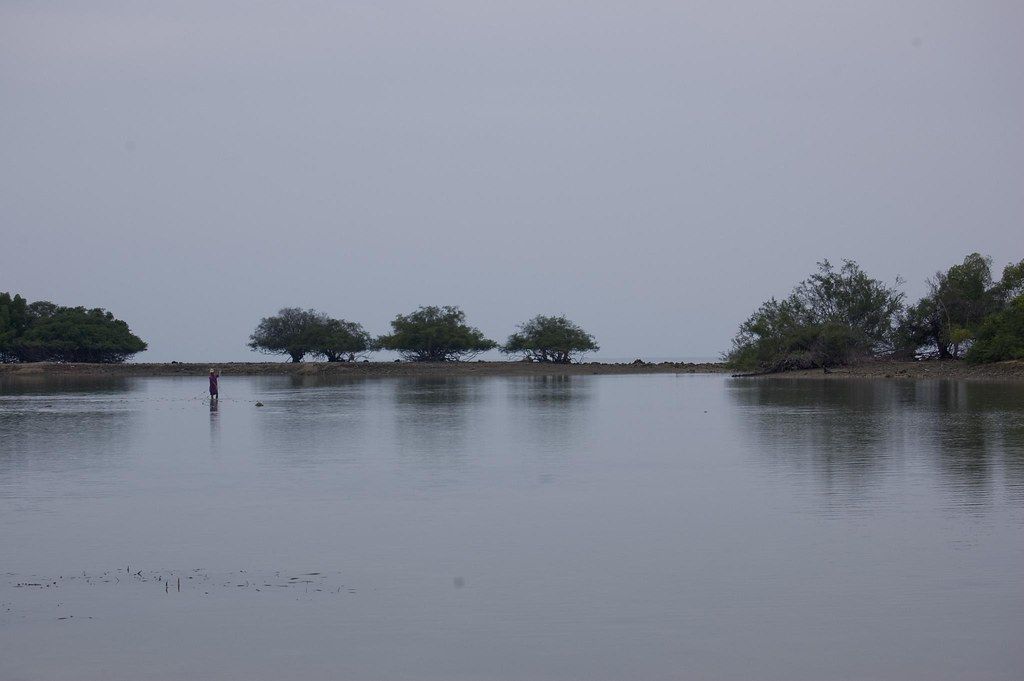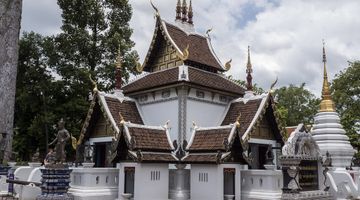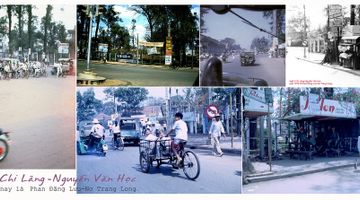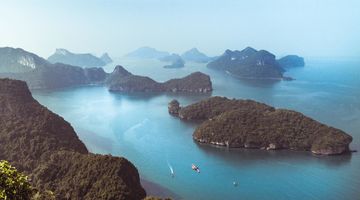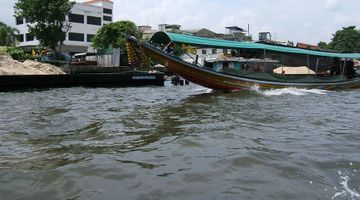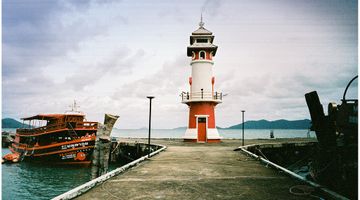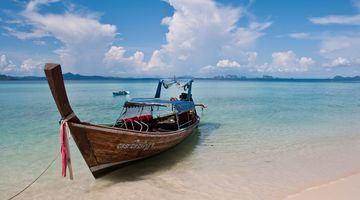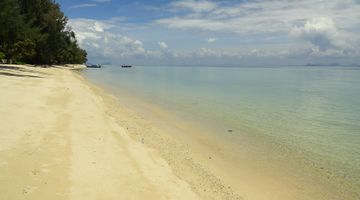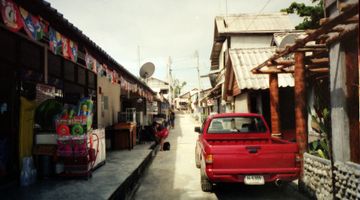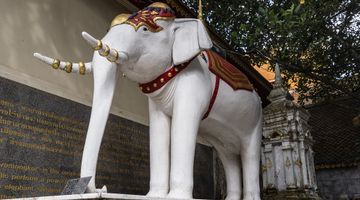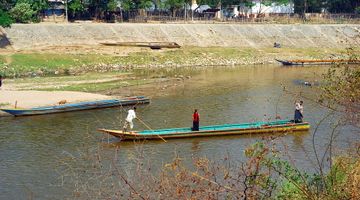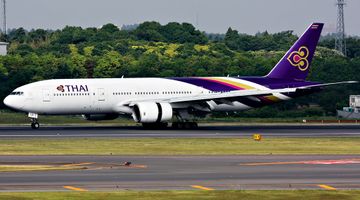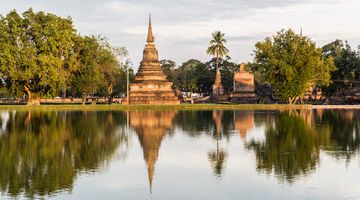Koh Samui Travel Guide
In a nutshell
Koh Samui – the second largest of Thailand’s islands after Phuket – was one of the original tourist destinations off Thailand’s east coast.
Until the 1970s, Koh Samui remained a remote, self-sufficient community. However, once roads and some more basic infrastructure were put in place, Samui was well and truly put on the tourist map. Many travellers flocked to this stunning tropical island during 1980s thanks to its spectacular palm-fringed beaches, pristine coral reefs and friendly locals.
After the tourist boom, backpackers looking for something a little more off-the-beaten-track, started venturing to Koh Phangan and Koh Tao instead. Today, Koh Samui remains a hotspot for people travelling to Thailand as it offers a huge range of activities, accommodations and beaches for everyone.
Why go to Koh Samui
The main reason to head to Koh Samui is to kick back and relax on the stunning beaches that surround the island. Wherever you roam around the island you will find beautiful sections of golden sand with turquoise water lapping the shore. The ocean here is so clear and water so warm that snorkelling among the coral reef off the coast is a perfect way to while away an afternoon.
However, if you’re looking for something a little more cultural and adventurous, Koh Samui has plenty to offer. Samui’s Big Buddha is a main attraction that rises high above the skyline (12m tall!) as are the Hin Ta and Hin Yai rocks which can be found on Lamai Beach.
For outdoor lovers, there are a number of hikes around the island that will get your blood pumping. One of our favourites is the hike to the Na Muang waterfalls. These two waterfalls are extremely picturesque and although the hikes to get there aren’t that long or strenuous, we’re sure you’ll want to take a dip in the natural pools to cool off!
When to go to Koh Samui
Koh Samui is accessible year-round and although it has some particularly rainy months, you are likely to enjoy some sunny days whenever you travel.
The busiest periods for Koh Samui are December and January (especially busy over Christmas and New Year), and July and August. These months strike the perfect balance between warm dry days, beach breeze and rain to take away the humidity. It is advisable to book your accommodation in advance if you wish to travel at this time, particularly if you want to stay in one of the more luxurious or boutique hotels.
All the other months of the year, except for October and November, boast high temperatures and clear skies. February and March are the driest while April, May and June see temperatures and humidity soar. October and November as likely to be the rainiest months with some storms, however, if you don’t mind a bit of a downpour and are looking for cheap rates travel at this time can be great.
Where to stay on Koh Samui
As Koh Samui has been on the tourist trail for well over 20 years, it offers a huge selection of accommodation catering to every type of traveller. From sprawling resorts with every facility imaginable, to simple huts on the beach, you will be able to find the perfect accommodation to suit your needs.
You’ll need to decide what you want to get out of your stay so that you can choose the right location for you. If you want to enjoy Koh Samui’s lively nightlife, you’ll probably want to stay in Chaweng. If you’d prefer to experience a more traditional stay, the fisherman’s village, Bophut, is a great option. For a quieter stay, somewhere like Maenam or around Big Buddha may be your best bet.
Where to eat in Koh Samui
Koh Samui has a fantastic food scene from high-end luxury to quality street food and everything in between. Whether you’re a backpacker looking to feed yourself on a budget, a family who needs to find something for everyone’s palate or a foodie lover who wants to try anything and everything, you certainly won’t go hungry on Koh Samui!
Koh Samui is famous for its coconut produce, so be sure to enjoy a fresh coconut on the beach at least once! Slurp out the delicious nectar before cracking it open to nibble on the crisp, white flesh.
How to get around Koh Samui
Although Koh Samui is fairly small (25km x 21km), the island has all types of transport options to help you get around.
As the island is used to both backpackers and family travellers, car and motorbike rentals are readily available across the island. Motorbike rental is the most economical way to travel (usually THB200-300 per day), however, this may not be suitable for everyone. Car hire is notably more expensive, but it does allow you complete flexibility and independence.
If you don’t mind getting public transport, songthaews are the most popular form of travel. These are a cross between a taxi and a public bus which offer a hop-on-hop-off service around the island. Each songthaew (pick-up truck with two rows of bench seats) will have its set destination and will stop off anywhere needed along the route. Know where you are going and have small denomination notes to hand (a journey usually costs around THB20).
The island notably doesn’t have tuk-tuks so don’t try and wait around for one as a cheaper alternative to a taxi!
How to get to and from Koh Samui
Koh Samui is the only island in the Chumphon Archipelago that has its own airport. This makes travel to and from Koh Samui extremely simple and fairly cost effective. There are around 20 flights a day from Bangkok as well as others direct from Phuket, Pattaya and even Singapore.
If you’re travelling overland on mainland Thailand or are coming to Koh Samui from one of the neighbouring islands, you can easy catch a ferry or catamaran. This is a cheaper option than flying, but will be a longer journey.
Lomprayah services connect Koh Samui with Koh Phangan and Koh Tao, as well as Chumphon and Surat Thani on the mainland. You can book these journeys online and in travel agents across the islands.
Tip There are several ferry piers in Koh Samui and you will want to choose the port closest to your accommodation.
From Koh Phangan, a journey to Prelarn Pier takes 20 minutes and to Nathon Pier takes 30. Both will only set you back a mere THB300. The journey from Koh Tao is a little longer (1h50) and is more expensive (THB600 to Pralarn Pier/THB700 to Nathon Pier).
From Surat Thani, you can only get a service to the Nathon Pier (THB450) which takes around two hours. From Chumphon you will need to travel to the Pralarn Pier (THB1,100) which will take around three and a half hours.
Is Koh Samui safe?
When travelling to Koh Samui you will need to keep your wits about you. The island on the whole is fairly safe and we don’t want to scare you off! However, as there are many tourists, there are some scams which are worth keeping an eye out for.
Ladyboy shows are a popular attraction on Koh Samui, however, they will push for you to take photographs with them after the show. Although they may seem friendly, they will ask for a payment after the show and the more ladyboys in the photo, the more money they will charge.
When getting taxis, be sure to agree a fixed fee before travelling as there are no metred taxis.
When hiring a car, motorbike, bike or jet ski, make sure you take plenty of pictures of the state of the vehicle at the point of rental. Some companies try to charge extortionate fees for damages that you may not have created.
Finally, keep an eye out for your personal possessions both when on the beach and also when hiking in the forest. Monkeys are notorious for stealing anything they can get their hands on and can get quite aggressive when challenged.

